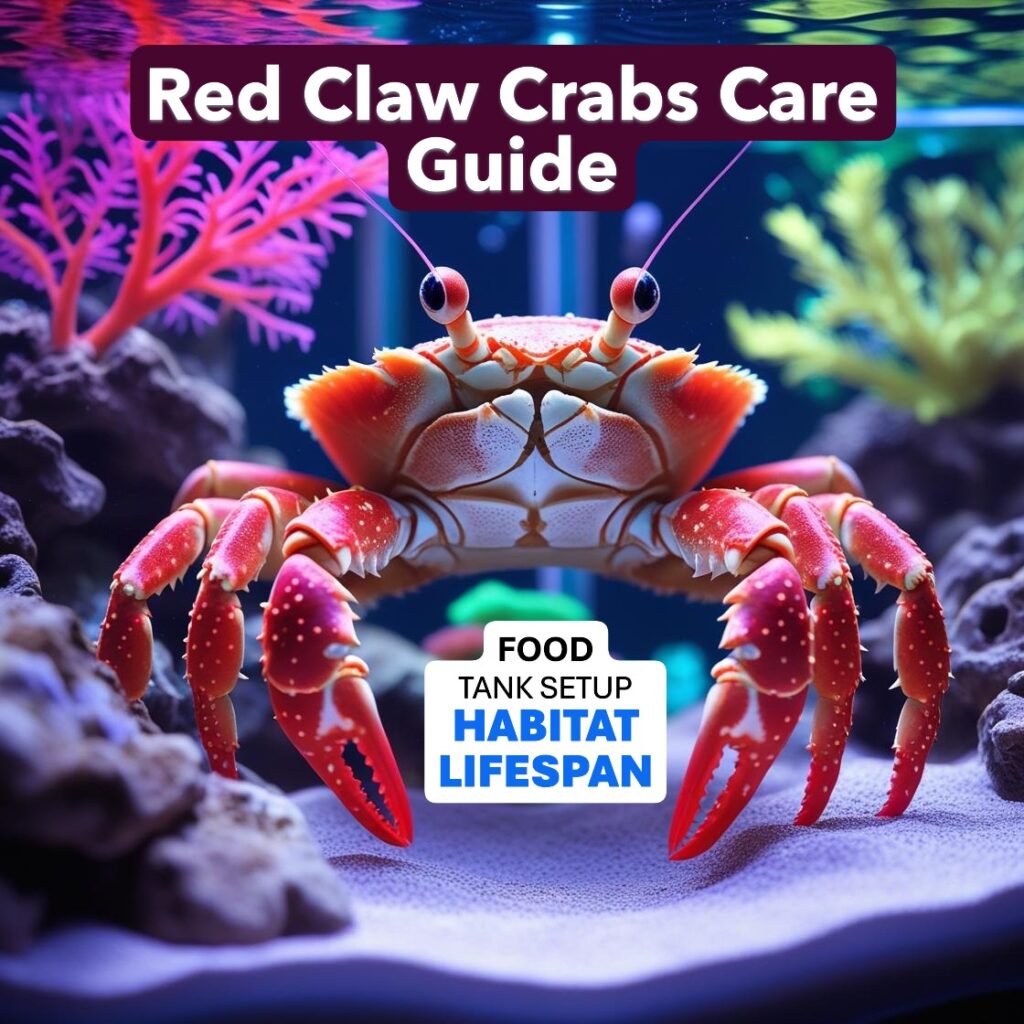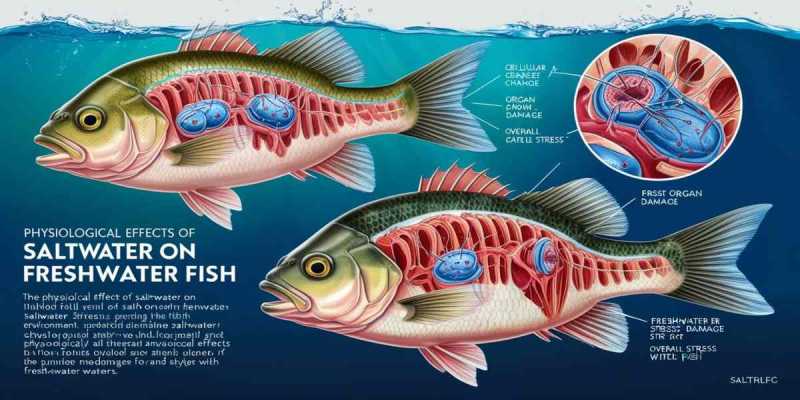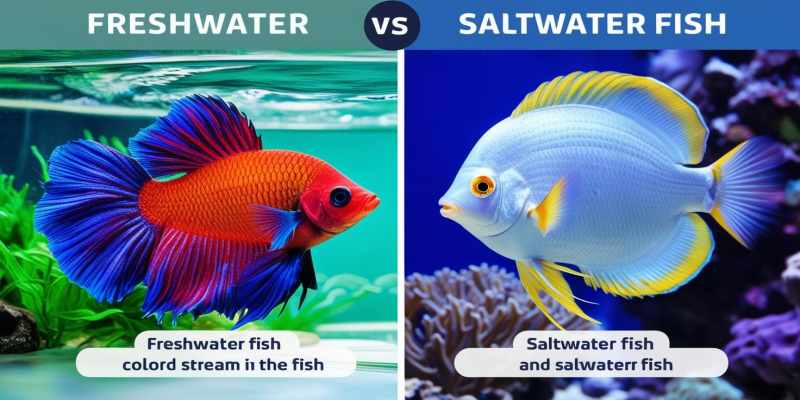Hello, this post is about red claw crabs. In this, we will learn about these semi-aquatic crabs in great detail. First of all, we should know that these crabs are the center of attraction for everyone because they are gorgeous.
Whenever we think of an aquarium in which we have to keep crabs, we think of red claw crabs. They add color to any aquarium. These are small crabs, mainly found in Southeast Asia.
Red claw crabs are known for their beautiful red claws and behavior. They are a popular choice for most saltwater aquariums due to their low maintenance requirements and beauty. In this care guide, we will know in detail about their care, compatibility with other fish, breeding, etc.
What Do Red Claw Crabs Eat?

When we talk about the red claw crab diet, they are omnivores. Which means they feed on both plants and animals. You might wondered What Do Red Claw Crabs Eat In A Tank? when you setup tank with red clawed crab. You must take care about Red Claw Crab Foods. You should feed them both types of food to maintain a balance in their diet.
In a tank environment, Red Clawed Crab Foods are:
- Algae wafers
- Sinking pellets designed for crustaceans
- Blanched vegetables (zucchini, spinach, peas)
- Protein sources such as bloodworms, brine shrimp, and small bits of fish
In the wild, Red clawed crabs live in the saltwater of Southeast Asia, such as mangroves and estuaries. They are omnivorous, eating organic matter and algae, and need twilight to breathe. Females lay eggs under their bodies, and their larvae require specific salinities to develop. These crabs can be territorial in their habitat.
To learn more in-depth about their dietary needs, check out our full post: “What Do Red Claw Crabs Eat? Tank vs. Wild Diet Explained”.
Ideal Habitat & Aquarium Tank Setup
Red claw crabs aquarium tank need a mix of salty water and freshwater environment. The following parameter will give you some short information about the proper setup of a tank, which includes:
The Ideal Size of the Tank Should be such that a Minimum of 10 gallons is required for a pair of crabs.

The following are the Water parameters:
- The Water Temperature: 75–82°F (24–28°C)
- The Water pH Level: 7.5–8.5
- The Water Salinity Level: 1.005–1.010 specific gravity
Land area: Crabs mostly need access to dry land or rock platforms to climb and rest
Hiding spots: One can add suitable Rocks, driftwood, and PVC pipes to help reduce stress
More setup tips are available in our article: “Ideal Temperature & Water Conditions for Red Claw Crabs”.
Lifespan and Size
Red clawed crabs are found in the Southeast Asia region, They live in a mix of salty and freshwater, and typically grow up to 4 inches including their legs, with body sizes around 2 inches (5 cm).
The average lifespan of the red clawed crab is 2 to 2.5 years in captivity, though proper care can sometimes extend this to 3 years. During their lifespan, they survive on organic matter and other algae.
Curious about their growth stages? Don’t miss: “How Big Do Red Claw Crabs Get? How Long Do Red Claw Crabs Live Explained”.
Do Red Clawed Crabs Need Land for Habitat?
Yes! Despite being aquatic, red claw crabs are semi-terrestrial and must have land access. This allows them to breathe atmospheric oxygen and reduces the risk of drowning or stress. Floating docks, rocks, or stacked driftwood can help.
Can Red Claw Crabs Live with Fish?

Can Red Clawed Crabs Live With Fish?
Fish compatibility depends on the crab’s behavior and tank setup. Red claw crabs generally prey on bottom-dwelling, slow-moving fish, so choose fish carefully.
Avoid keeping these fish in the tank:
- Long-finned fish or slow-moving species
- Small invertebrates or shrimp
The best tank mates for crabs include:
- Fast-moving, mid-swimming fish
- Saltwater species such as mollies
For a deeper dive into compatibility, see: “Can Red Claw Crabs Live with Fish? Best & Worst Tankmates”.
Are Red Claw Crabs Dangerous?
Red claw crabs are not dangerous to humans, but they can be aggressive toward tank mates, especially if space is limited. Their claws are used for defense and climbing but aren’t harmful unless threatened.
Breeding Red Claw Crabs
Breeding red claw crabs in captivity is extremely difficult because their larvae need a specific salinity range to develop. Females can carry hundreds of eggs under their abdomen, but successful rearing typically requires a separate breeding tank and expert knowledge.
Want to try it? Read our full guide: “Breeding Red Claw Crabs: Setup, Behavior, and Care”.
Pond Crabs vs. Red Claw Crabs

While similar in appearance, pond crabs and red claw crabs have distinct needs. Pond crabs are fully freshwater and more adaptable, but red claw crabs need brackish water and land access.
Get the comparison: “Pond Crabs vs. Red Claw Crabs: Key Differences”.
You May Also Read: If you’re curious about what crabs eat in the ocean and what animals prey on them, don’t miss our in-depth guide – What Do Crabs Eat in the Ocean – And What Eats Crabs? (Prey & Predators Explained).
Final Thoughts
Keeping red claw crabs in an aquarium properly is very important. Proper diet, saltwater habitat with access to land, and good tank mates make the tank look beautiful. Explore the guides linked above to master every aspect of red claw crab care!
Do you still have questions? Leave them in the comments or check out our other in-depth posts on red claw crab behavior, diet, and tank compatibility!



